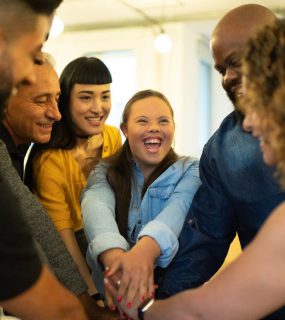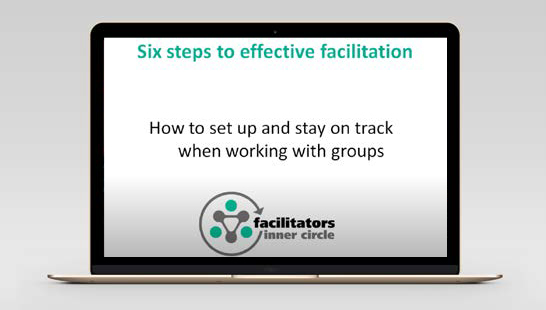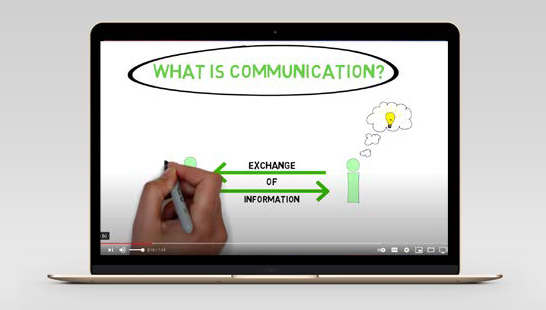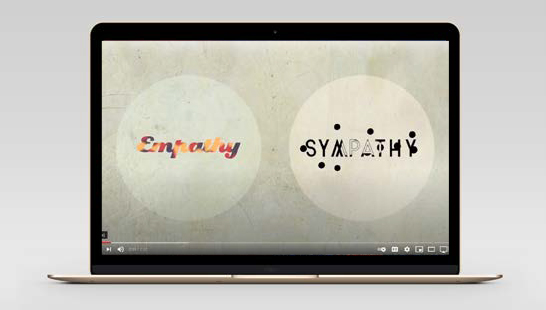How to use this guide
This guide is designed to train facilitators how to run peer led support groups. It provides the knowledge needed to set up a peer support group and develop the skills to take on a facilitator’s role.
Contents
Facilitated peer groups
Multicultural Peer Network program
In 2020, SSI created a successful model for running disability support groups in multicultural communities across NSW called the Multicultural Peer Network (MPN). The program was funded through the Department of Social Services (DSS).
During the MPN program, SSI found tailoring disability support groups to different cultures, languages and interests had a vastly positive impact on people with disability in these spaces.
With the program coming to an end, SSI is sharing resources from the MPN program so community leaders and organisations can start their own peer groups.

Go to next tab >
The history of service delivery models in Australia
1970-2000 Medical and charity models to social model
- The medical profession moved away from claiming responsibility for people living with disabilities — disability was thought to be a social issue.
- The guiding principles involved integration into mainstream society and service provision to promote this integration.
2000- Medical and charity models to social model
- The focus changed from community integration to inclusion.
- The focus turned from the disability to the person and their individual strengths.
The medical model
- a problem to be solved
- needing to be fixed or cured
- needing to be treated by the medical profession/medical experts
If we follow the medical model, we are likely to view people as patients. This includes the following assumptions:
- sick people don’t go to work
- sick people don’t go on holidays
- sick people have something wrong with them
The charity model
- victim of circumstance (poor thing/been dealt a bad hand in life)
- deserving of pity
The charity model limits the community’s role to just giving money. Disability is still seen as a problem, but it’s someone else’s problem.
The social model: people are experts in their own lives
- the environment is disabling
- attitudes are disabling
Disabling attitudes include low expectations and negative attitudes:
- they can’t achieve — grow/develop or be capable of learning
- they are all the same
- they belong with their own kind
- they have nothing to contribute — they can’t work
- they hold others back
- they are a burden to others
Ask: Are there any other disabling attitudes?
Review
Review
- Does this new social model make you feel more comfortable as a person who lives with a disability?
- Has anyone experienced any disabling attitudes in the past due to their disability?
- What barriers have you experienced when going out into the community?
- Does anyone have any additional comments or afterthoughts?
Go to next tab >
Ready to start facilitating
Preparation and set-up
Preparation checklist
- Book the venue or set up the online meeting link – Zoom, Teams, or another tool
- Send invitations to participants
- Arrange catering (face-to-face meetings only)
- Send confirmations with an outline of the program
- Confirm attendees
- Think about and arrange facilitation support — this can be in the form of a co-facilitator, assistant or support professional
Resources checklist
- Laptop and cable
- Speakers to play butcher’s paper and/or a whiteboard (with marker pens)
- Paper and pens for participants
- Evaluation forms
- Cater to individual additional needs: such as accessibility or live captioning requirements
- Schedule meeting using agreed online tool Send meeting details and link to all participants
- Check your laptop camera and microphone are working
- Ensure you have adequate internet access to enable online conversations and play videos
- Explain the interactive tools available to participants — this will vary according to the medium chosen
Starting the session
Acknowledgement of Country or Welcome to Country
An Acknowledgment of Country is an opportunity for anyone to show respect to the Traditional Owners of this Country.
Following this traditional custom is an important way to give Aboriginal and Torres Strait Islander People back their place in society and a way for us to formally pay our respect to their people, history, and culture.
A Welcome to Country is performed only by a Traditional Owner Elder who is welcoming you to their Country, whereas an Acknowledgment of Country is for anyone to conduct to show respect to Australia’s First Nations People as the Traditional Owners of the land.
For your Acknowledgement of Country, you may proceed by stating the following.
Go to next tab >
“
I’d like to begin by acknowledging the Traditional Owners of the land on which we meet today, and pay my respects to Elders past and present and the continuation of cultural, spiritual and educational practices of Aboriginal and Torres Strait Island peoples.
”
Timing of sessions
A schedule gives participants an idea of content and how much time each session will take as well as when breaks will occur.
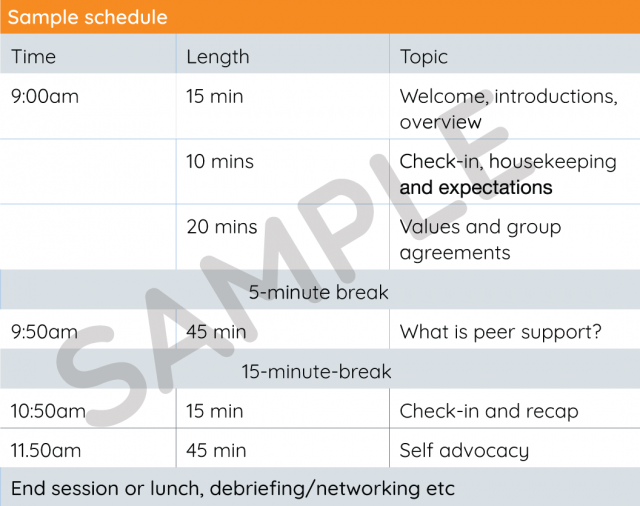

Go to next tab >
Welcome to participants and introductions
- What is your name?
- What brought you here today?
- Do you have any previous facilitation experience?
If you are employed
- What is your role?
- What do you like about it?
- What is challenging about your work?
If you are a student
- What do you like about your studies?
- What are you finding challenging?
If you are a carer
- What do you enjoy?
- What are you finding challenging about being a carer?
- What are you hoping to get out of today?
Ask participants to write down some individual goals and desired outcomes. Encourage them to check these regularly.
Go to next tab >
Purpose, goals and outcomes
The purpose of this training is to enable participants to facilitate inclusive groups covering a variety of special-interest subjects. Encourage participants to consider what they would like to learn.
On completion of this training, you will have a basic structure and the resources to facilitate peer groups.
Summary of topics
- Basic facilitation skills
- Ethical facilitation
- Creating a safe space
- Communication
- Group dynamics and personalities
- Conflict resolution
- Stages of group development
- Self-care and support systems

Go to next tab >
Housekeeping
Face-to-face facilitation
- Where are the amenities?
- Where are the exits?
- What is the fire safety procedure?
Group agreements
Ask the group to establish some group agreements.
Examples:
- Phones should be turned off
- We all need to arrive on time
- We should raise our hand if we want to comment or ask something
- We need to keep confidential what is shared by others in group discussion
- We need to be respectful and supportive of one another
The role of the facilitator
What is a peer?
Facilitator training will cover:
- Basic facilitation skills
- Ethical facilitation
- Creating a safe space
- Communication
- Group dynamics and personalities
- Conflict resolution
- Stages of group development
- Self-care and support systems
A peer is a person who belongs to the same group as you, maybe because of age, where they live, where they are from, or the kind of work they do.
- What is peer support?
- Where and when can it happen?
- In what areas can peers support one another?
- What are some good things that happen when peers support one another?
We are all peers here today because we are all facilitators!

Go to next tab >
The role of the facilitator
To ease, enable, support, assist, aid or help.
Their job is to present, guide, monitor, redirect and assist.
The facilitator is not the expert. We are all experts in our own lives and we are all learners together.
Watch the following video: Six quick facilitation tips
Watch the following video: Eight things to be as a facilitator
Go to next tab >
Ethical facilitation
Create a safe space for everyone.
You will often be working with people who are potentially vulnerable, come from different backgrounds and have varying needs. It is your role to treat all participants equally and fairly, regardless of gender, culture, ethnicity, sexuality, age or ability.
Please see, SSI’s Multicultural Peer Network Practice for further information on the ethical considerations of peer-to-peer support groups.
Go to next tab >
Creating a safe space
Agreements should be the result of group participation and sharing. We make group agreements to:
- Create boundaries so that everyone can feel safe, respected and heard
- Create a safe and supportive environment
- Help with comfort and the flow of conversation, especially when dealing with sensitive or challenging issues
- Deal with inappropriate behaviours, such as inappropriate language, put-downs etc. and provide tools for how to address these behaviours
- Encourage people to share ideas, information, values and attitudes
- Build trust
Ask: What do we value? Why?
- family
- friends
Why?: Because we share trust, respect etc.
One of our agreements is to listen to each other so we can communicate.
Ask: What do we agree on?
Write the suggestions on a whiteboard or include them in the online chat.
This is what we agree on
1
2
3
4
5
6
(Note: Add the following if they are not mentioned — safety, listening to each other, taking turns. If necessary, the facilitator could put these up first.)
Communication
What is communication?
Effective communication occurs when the receiver understands the sender’s message in the way the sender intended.
A facilitator helps communication by listening and asking clarifying questions.
Watch the following video: What is communication?
Communication can be:
- Visual — see what is being communicated
- Auditory — hear what is being communicated
- Sensory — imagine you can touch/smell/taste what is being communicated
Communication is more than just the words spoken. It also includes the tone of voice and the body language used.
What happens with communication for those of us who are hearing, vision or speech impaired?
Go to next tab >
Listening — A foundation for good communication
Active listening
When we actively listen, we focus on the speaker.
Examples
- repeating content (e.g. “What I heard you say was…”)
- responding supportively (e.g. “How did you feel about that?” or “How did that affect you?”)
- verbally acknowledging (e.g. “mm”, “Ah-ha”, “I see”)
- physically acknowledging (e.g. nod or appropriate facial expression)
Open and closed questions
Examples:
Closed questions often start with: Can …? Did …? Will…? Have …?
- “Did you have a good weekend?” (closed question)
Open questions require an explanation or a more detailed response. They may start with: How…? Why…? What…? Tell me more/about…
- “What did you do on the weekend” (open question)
Ask: What gets in the way of really listening?
- arguing
- filling the silence
- pretending that you are listening
- pretending that you have understood
- being impatient (e.g. saying “get to the point!”)
- being distracted
- thinking about what to say/ask next
- looking at your phone
Helpful hints when facilitating
If someone talks too much, or for too long, you could politely interrupt.
Examples:
- “We have to move on now but we can revisit this later.”
- “I will just ask you to hold that thought so we can give someone else a turn.”
Allow silences. Remember that everyone does not process information at the same rate, especially those who may have an impairment or are taking medication.
When have you had trouble listening, or when have you not felt heard or understood?
Empathic listening
It is important to both hear and feel the other person’s point of view. Good listening skills can enable you to ‘walk in another person’s shoes’
Examples:
- “I understand what you are saying…”
- “You are [emotion] because…”
Go to next tab >
Group dynamics and personalities
Building rapport and trust
Building rapport involves creating trust and respect for one another.
Empathy means feeling another person’s feelings.
Sympathy involves acknowledging another person’s words or feelings.
Watch the following video: Brené Brown on empathy
Monitoring and maintaining group focus and flow
Your role is to guide and keep the group focus on the topic. You also need to keep to the timeframe.
This does not mean there is no room for discussion and ideas. You can maintain flow by asking questions.
Examples:
- “Can anyone give us an example of that?”
- “Could you tell us a bit about …?”
If something unexpected happens (e.g. someone becomes upset, a participant moves away from the topic, or someone refuses to stop talking) then it is your job to bring the focus back to the topic.
Examples:
- “Let’s think about [the topic] again.”
- “Hold that thought, I wonder if anyone else would like to add something.”
Managing personalities
(Note: If there is a co-facilitator, they can monitor participants and assist the facilitator if necessary)
What can interrupt the flow of conversations?
Argumentative personalities
These people tend to argue or to disagree with most ideas.
It is important to be firm but polite and to return the focus to the topic.
Examples:
- “I understand your position.”
- “Can we agree to disagree on that point?”
Remember that it is important to keep your voice low and slow, and use fewer words.
If someone makes an accusation that you have no understanding of their situation (e.g. “You don’t know what you’re talking about”), stay calm and do not argue. Calm the situation, then involve the group by asking them to discuss the topic.
Examples:
- “Thank you, this is a good example of how we are all experts in our own lives.”
- “Thank you for your input. Now, what do other people think about…?”
Distracting or annoying behaviours
Side conversations or comments, using phones and texting are some examples of distracting and annoying behaviours.
Examples:
- “I just have to say, if you are on the phone or otherwise distracted, it is very hard for me to stay focused, or for you to hear everything I am saying. I’d I like it if you could put your phone on silent, as we agreed earlier.” (point to the group agreements)
- “If you are having side conversations with other participants, it is very hard for me to stay focused, or for you to hear everything I am saying. May I ask that you wait for the break to chat?” (point to the group agreements)
- “May I ask that we all stay present in the room” and, after a short pause, “Is that doable?” (wait for acknowledgement and consensus)
Participant is upset or angry
If a participant appears upset or angry during the discussion, it is important to stay calm. Remember: lower > slower > fewer. If needed, the co-facilitator can step in and have a one-on-one conversation with them.
Participant diversions and tangents
Although it may be interesting information, it is not helpful if it is not related to the discussion. Acknowledge that the points are interesting and may be raised at a later time.
Examples:
- “Let’s just note that one down for later.”
- “Maybe we can talk about that later.”
Dominating personalities
Sometimes there is a ‘know-it-all’ or someone who wants to be the ‘voice of experience’. Acknowledge the points they make (e.g. “I’m glad you said that”) then invite others into the discussion.
Examples:
- “That is a very interesting point — what do others think?”
- “I can see that you have had experience in this and you’d like to share. Would you mind making a list of some key points and, if we have time later, we can re-visit those points? Thank you.”
Shy or quiet personalities
Some people prefer to remain silent or are too shy to speak in front of a group. Draw them into the discussion by asking them a question.
Examples:
- “What is your experience…?”
Use smaller groups, which are less intimidating. Offer positive encouragement and reinforcement but never put pressure on the person.
Don’t take it personally!
People often disagree and want to express their own opinions. If a person becomes upset or angry, it is unlikely to be about you. More commonly, it is to do with their nature, life-situation or even a recent occurrence.
It helps to know your audience. Sometimes group dynamics and personalities can lead to conflict. That is when conflict resolution becomes important.
Go to next tab >
Conflict resolution
Conflict resolution
People have their own perceptions, personalities and opinions. As a result, conflict can come from any one or multiple internal or external factors including:
- a difference of opinion
- poor communication
- differing views and values
- personality clashes
- poor management skills
- poor information sharing
- feelings of inequity
Understanding what may have led to the conflict will help you to manage and resolve it.
Ways to minimise conflict occurring
Sometimes there is a ‘know-it-all’ or someone who wants to be the ‘voice of experience’. Acknowledge the points they make (e.g. “I’m glad you said that”) then invite others into the discussion.
- accept and respect one another’s right to express needs, opinions and feelings honestly and appropriately
- listen to the needs, opinions and feelings of others
Note: Redirecting the issue back to the group agreements about behaviour can also help.
When have you had trouble listening, or when have you not felt heard or understood?
Listening
Use active listening to acknowledge the differences in viewpoints or to redirect the conversation and involve others.
If this is unsuccessful, try a ‘drop the rope’ strategy. This means avoiding conflict by refusing to argue and moving the conversation on.
Examples:
- “Shall we agree to disagree and move on? Would that be ok?”
Go to next tab >
Stages of group development
Forming — the focus is on you and participants take direction from you
When a new member joins the group, the group resets to the storming stage.
Storming — participants compete for positions and personalities emerge (e.g. dominant, quiet, conflicting)
Norming — the group knows what is expected and starts to settle
Adding a new facilitator would reset the group to the norming stage
Performing — participants are ready to participate, perform and grow
Adjourning — the group may choose to meet again and/or want the group to continue
Self-care and support systems
Managing stress
We are facilitators and not counsellors.
There are times when people could be affected by the discussion and need support. Simple relaxation techniques may help, although some people may need more (e.g. someone to talk privately with).
Ask: What are some of the indicators of being stressed?
If a member of the group becomes upset, the co-facilitator can step in and take the person aside for a chat. You could also offer a drink (e.g. water, tea, etc.).
Allow the person to talk if they want to do so. Alternatively, encourage them to focus on their breathing and sit quietly. You can also suggest they contact someone — a friend, support person or professional — who may be able to help.
Examples
- “Would you like to talk to someone privately?”
- “Would you like a drink?”
- “Is there someone you would like me to contact for you?”
This is not the time to tell someone what to do. Unsolicited advice can be disempowering. If someone starts to give advice, you can acknowledge the positive intention and then ask them respectfully to stop.

Go to next tab >
Self-care
Personal comfort and needs include such things as:
- environment — chair, room temperature, screen time
- refreshment — drinks and snacks
- amenities — toilet breaks
Take self-care breaks (e.g. walk and stretch)
Mindfulness strategies, such as deep breathing, can be useful. Encourage people to be aware of, and respond to, any physical discomfort (e.g. moving into a more comfortable position or repositioning their chair).
Go to next tab >
Debriefing
Sometimes it helps to talk to someone. Sometimes it helps to write in a journal. This can be particularly important in cultures where it is normal to keep things to oneself.
Ask: Who do you debrief with?
Examples
- family, friend, manager, supervisor, peer, colleague, etc.
Go to next tab >
Support systems
Support systems are essential.
Examples
- Support person — someone available in the event you need help
- Physical outlets such as exercise or socialising with friends
- Engaging in a ‘community of practice’ — groups of people who share a common interest or value
Ask: What are some other examples of a positive support system?
We cannot support others effectively if we cannot support ourselves first (e.g. the oxygen mask on a plane scenario — if you run out of oxygen you won’t be able to help anyone).
Review
Topics covered
- Basic facilitation skills
- Ethical facilitation
- Creating a safe space
- Communication
- Group dynamics and personalities
- Conflict resolution
- Stages of group development
- Self-care and support systems
Ask: Does anyone have any comments or afterthoughts?
Go to next tab >
The goals of MPN were
- To help improve social and community participation between people who live with a disability and the communities in which they live
- To increase knowledge of the services available to culturally and linguistically diverse (CALD) communities, including the NDIS
- To support local communities in making informed decisions
- To provide helpful in-language resources to CALD communities
- To create opportunities where CALD communities can continue learning and share information
- To provide ongoing contact for isolated CALD communities
- To train and employ paid Lived Experience Facilitators to deliver
sessions throughout the year
Go to next tab >
The next steps
You are now ready to run facilitated workshops in the targeted special interest areas.


